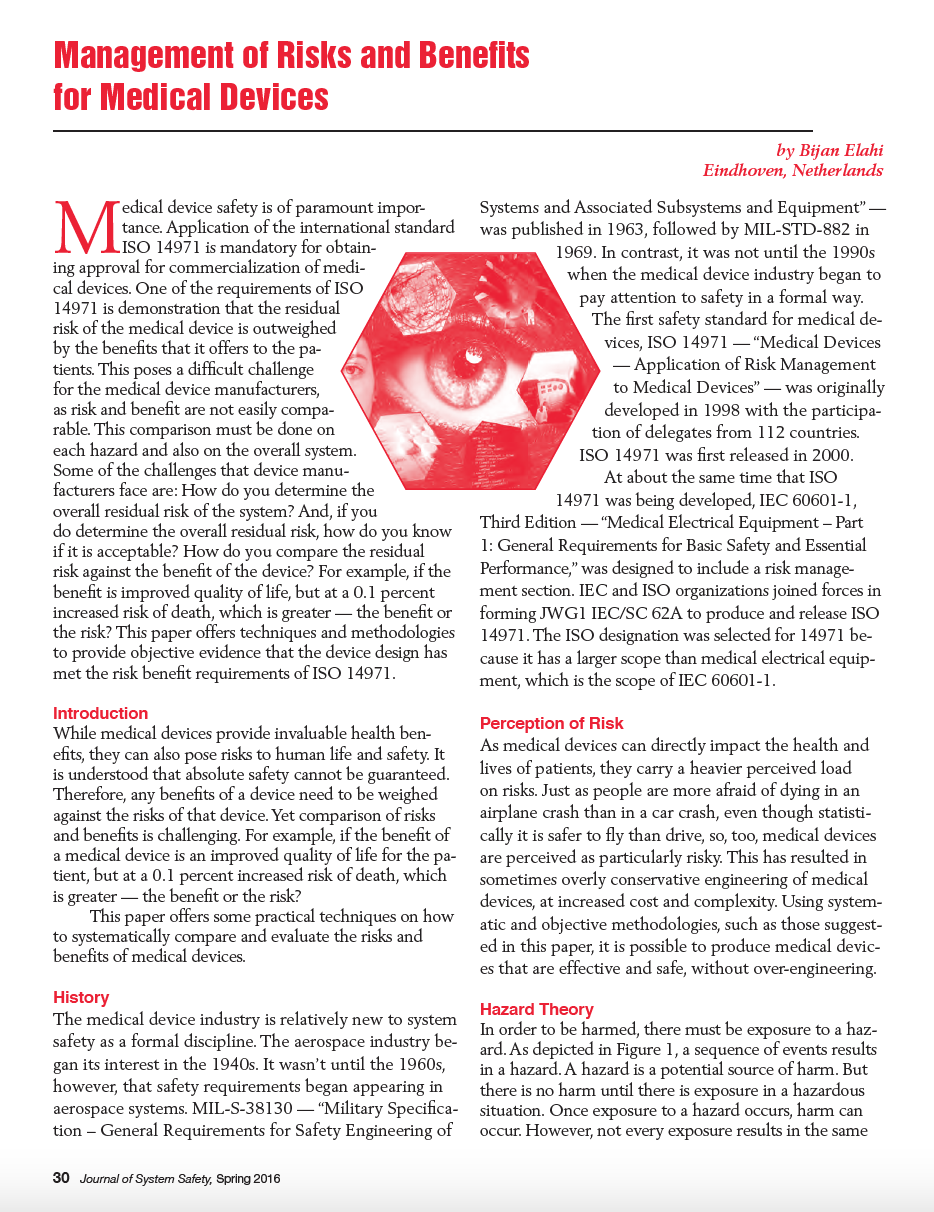Management of Risks and Benefits for Medical Devices
DOI:
https://doi.org/10.56094/jss.v52i1.137Keywords:
ISO 14971, medical devices, hazard theory, risk acceptance, risk/benefit, patient safetyAbstract
Medical device safety is of paramount importance. Application of the international standard ISO 14971 is mandatory for obtaining approval for commercialization of medical devices. One of the requirements of ISO 14971 is demonstration that the residual risk of the medical device is outweighed by the benefits that it offers to the patients. This poses a difficult challenge for the medical device manufacturers, as risk and benefit are not easily comparable. This comparison must be done on each hazard and also on the overall system. Some of the challenges that device manufacturers face are: How do you determine the overall residual risk of the system? And, if you do determine the overall residual risk, how do you know if it is acceptable? How do you compare the residual risk against the benefit of the device? For example, if the benefit is improved quality of life, but at a 0.1 percent increased risk of death, which is greater — the benefit or the risk? This paper offers techniques and methodologies to provide objective evidence that the device design has met the risk benefit requirements of ISO 14971.














